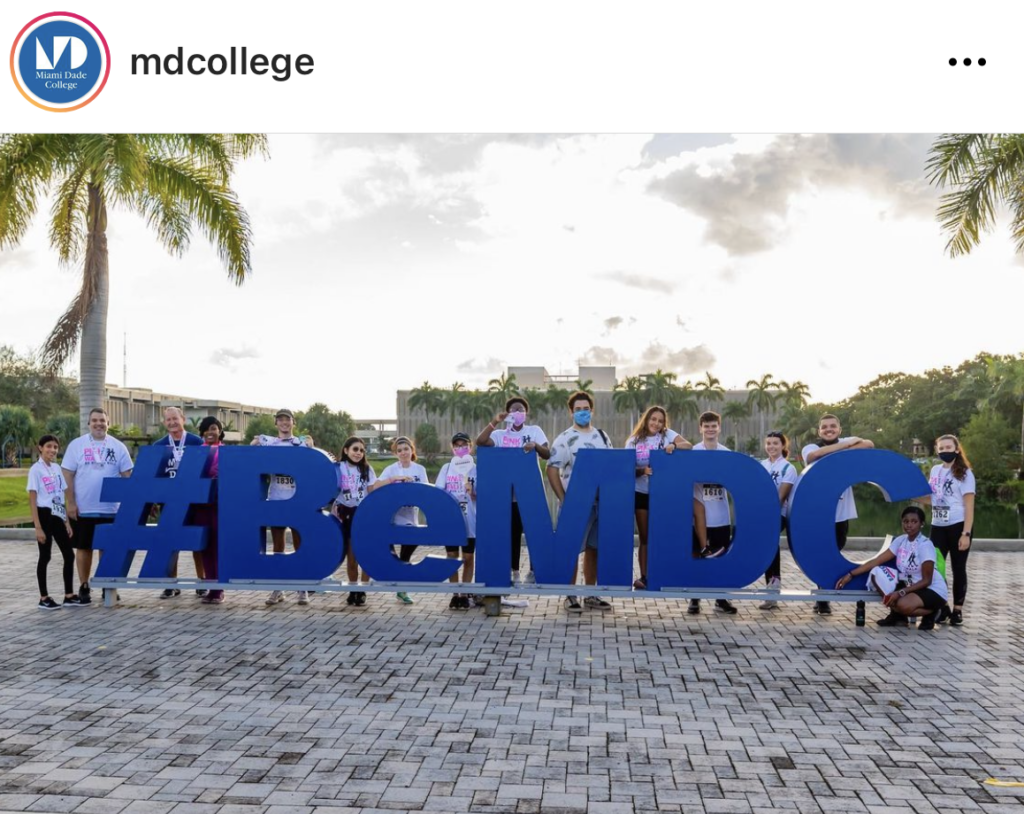In my previous post about lifestyle brands, “What Lifestyle Brands Can Teach Us About Alumni Relations,” I explore the idea that long before “lifestyle branding” was a thing, colleges and alumni associations were working hard to foster connections and maintain relationships based on what they stood for and the values they represented, which is exactly what today’s lifestyle brands (like Lululemon and MUD/WTR) are doing. Check it out for a quick intro into lifestyle branding and how it applies to community colleges and their alumni associations.
But hurry back, because today’s post is the first in a 2-part series where I’m going to talk about common lifestyle branding tactics and ideas that you can use to kick your college and alumni marketing up a notch.
More than ever, community colleges are looking to expand their accessibility and impact and need to find new ways to stand apart. One of the arguments that I’m making today is that our purpose, and our values, provide a key differentiator we should consider.
In many ways, this post is not just about tactics but about shifting the role that our values play in our marketing so that they become part of our value proposition to students. We believe in the life-changing power of education; we believe in opportunity for all; and we believe that if students work hard they can build better lives for themselves and their families. My guess is those are values most of us share. Not surprisingly, those are the same ideas that inspire prospects to pursue their higher educations and motivate alumni to claim their college identities publicly and start giving back.
So, how do we inspire them to do this?
Cultivate Authenticity
Lifestyle brands don’t just know their audiences, they are their audiences. Why do hipster lifestyle brands have their hipster founders tell their backstories? Because they’re cultivating a sense of authenticity and relatability. Why do lifestyle brands feature testimonials, social media posts and images from their customers? Because they’re using social proof to cultivate authenticity. They are showing us that they are living the story they tell.
So, first, you got to know what story you’re telling. And there are two parts to this: knowing your brand and knowing your audience.
Lifestyle brands start with a clear identity—they know who they are trying to appeal to. And so should you. Identify your values, especially those that represent ideals that prospects can aspire to. You can start on your college’s mission and values page but that’s not where you should stop. This might mean research into student demographics, their media preferences, focus groups that talk to current students about their fears, challenges, needs, and hopes. You need to know who they want to be so you can empower them to be that.

Tell Your Story
Once you know your identity and your audience, you need to find ways to tell your story. Their focus on content marketing is something that really sets lifestyle brands apart.
At the college and foundation level, it seems to me that there are basically two strategies for doing this: we tell student and alumni stories, or they tell the stories themselves.
My guess is all of us are using student, faculty, and alumni profiles to some extent because they’re the easiest way to show prospects that your values lead to real results, that you really are helping people become their best selves (does that sound like lifestyle branding?!). What you’re effectively doing is showcasing your customers’ experiences and the lifestyle benefits gained by being a part of your community. This is a great way for you to tell your brand story.
For alumni associations, one way to offer value to alumni while telling a story they want to be part of is through a free newsletter. Not rocket science I know, but for those of you just starting to develop your alumni offerings, this is where you should start. For alumni, like lifestyle brands, the key is cultivating an identity they want to claim.
Alumni want to be proud of what they’ve done and where they’re going, but the difficulty community college alumni associations face is that their colleges are seen as just a stepping-stone to bigger things. So, here’s where you own that. How do you make them feel like they’re part of a long lineage of educational and professional successes? By showing them that they are by telling those stories.
Last year, we performed a really cool bit of research into the recruiting and retention practices of a handful of exemplar community colleges from across the country and discovered some really smart ideas.
One of those is Miami-Dade College’s use of a hashtag to encourage students to share and tell their own stories: #BeMDC. Not especially groundbreaking but it foregrounds this idea of giving your students the opportunity to claim your identity publicly and be proud of it. In a world where hashtags go in and out style faster than you can say “Baby Yoda,” deploying one in a permanent fashion supports underlying messages of constancy, permanence, security, and identity. Considering Miami-Dade is the largest community college in the country, it’s a tactic worth paying attention to.
Another tactic that is being used to cultivate an authentic and relevant voice is something Pierce College is doing with their student podcast. I just love this. Not only is it a chance for students to talk to students about real issues that are relevant to their experiences, but they could easily be tied to multi-media, sound production, even theater programs, who have students who would benefit from learning how to produce a podcast.
An extension of those written profiles are videos.
Youtube was made for stories. And as the second most used search engine in the world you need to be on it. Again, these are stories you can tell through more traditional style ads, or stories you can have students and alumni tell through videos that use authentic narration.
I’m going to close today’s post with a definition of lifestyle brands from the A Group, a marketing and tech firm focused on faith-based nonprofits.
“A lifestyle brand owns, elicits and represents emotions, values, identities and aspirations of its users. It speaks to the human experience beyond just the problem the product solves or the solution the brand offers. It helps people express who they are and empowers them to be who they want to be.”
Sounds a lot like your community college and alumni association’s mission, right? Starting to pick up what I’m putting down? Check back next month for a second post on lifestyle branding tactics like building social communities, telling your story through ads, and the key to it all…giving away stickers. Yes, stickers!
Lifestyle Brand Tricks to Excite and Engage Alumni & Students: Part 2










